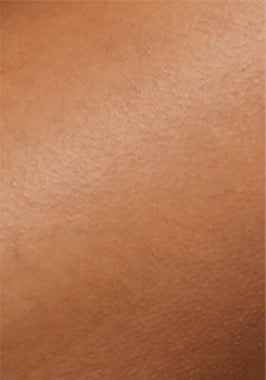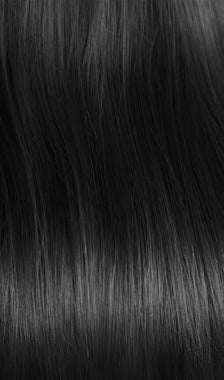This article will explore how pregnancy can affect the body's hair cycle and how the IPL hair removal method works to understand if it is safe to use IPL during pregnancy and breastfeeding or if it is better to avoid it and why.
Table of contents:- Part 1: How does the skin change during pregnancy?
- Part 2: What is IPL and how does it work?
- Part 3: Is it safe to use an IPL hair removal device during pregnancy?
- Part 4: Conclusion
How does the skin change during pregnancy? (A focus on the hair cycle)
Pregnancy is a period during which more than 90% of women can experience significant skin changes that can greatly impact their lives [1]. For example, women experience many physiological changes during pregnancy that can lead to the development or worsening of acne vulgaris and increased hair growth in different parts of the body [2], as well as other skin problems such as pregnancy-related dermatoses and hyperpigmentation [1], stretch marks and varicose veins [3].
Pregnancy and hair

Hair growth is a cyclical process. The cycle consists of phases of rapid growth and elongation of the hair shaft, alternating with phases of rest and regression controlled by apoptotic (also known as programmed cell death) signals [4]. This cycle can be divided into three phases [4]:
- Anagen (growth): This is the active phase in which the hair follicle works to produce the hair fiber.
- Catagen (transition): This phase begins with the end of the anagen phase and is characterized by a transition to the resting phase. During this phase, the hair follicle regresses and loses about one sixth of its standard diameter.
- Telogen (resting phase): This is the resting phase of the hair cycle, in which the hair follicle is inactive and the growth of the hair shaft no longer occurs. This is followed by shedding and hair loss.
During pregnancy, there may be a mild to moderate increase in hair growth due to hormonal changes. For example, estrogen and androgen stimulation in the second half of pregnancy [1] may increase the number of hair follicles that remain in the anagen (growth) phase [5], meaning that hair continues to grow.
After delivery, this hormonal-induced hair growth usually subsides and the hair follicles return to the telogen (resting) phase within 3-6 months after delivery with a sudden drop in hormone levels. This results in excessive hair loss, known as postpartum telogen effluvium [5].
What does this mean? This means that during pregnancy, the number of hairs that fall out is reduced and they not only continue to grow in the hair follicles but also increase in diameter (become thicker), resulting in a hormonally induced appearance of new hair growth on various parts of the body such as the abdomen, lower back and thighs [6], which can become a major problem for women during pregnancy.
If you're an IPL user, you may be wondering if you can continue using your IPL device during pregnancy to remove all the new hair that's expected to grow during this time. Let's get to the bottom of it.
What is IPL and how does it work?
To understand the safety issues that may be associated with IPL use during pregnancy, let us first describe the method of IPL hair removal and how it works.

IPL stands for Intense Pulsed Light. It is a popular hair removal method that consists of a home-use device that can achieve long-term hair reduction on multiple areas of the body, including larger areas such as the back, stomach, and legs, due to its large spot size [7]. Multiple treatment sessions are required to achieve long-term hair reduction.
How does it work? IPL consists of high-intensity light sources that use a high-power flash lamp that produces a broad wavelength non-coherent light, usually in the range of 500 to 1,200 nm [7]. Its hair removal ability is based on the principle of selective photothermolysis, which targets the melanin (the pigment that gives hair its color) in the hair bulb to cause relatively selective thermal destruction of the hair follicles at appropriate wavelengths [8].
Individual light pulses have a specific duration, intensity and spectral distribution, which enable a controlled and limited energy supply to the hair follicle [7].
The advantages? IPL offers the possibility of performing the treatment with home-use devices that are reported to be as successful as laser systems due to the same thermal effect. It is less expensive and has a larger spot size, allowing for faster treatment [9].
The disadvantages? The treatment is more effective in people with fair complexions and dark hair and is therefore considered ineffective or unsafe in people with dark complexions or light hair. Side effects such as pain, redness, swelling and pigmentation have been reported [10], but they are usually rare and temporary and are a safe method when used correctly [8].

To avoid possible side effects, some modern IPL devices are equipped with cooling systems that protect the skin. The Ulike Sapphire Air 3 IPL devices, for example, use the patented sapphire ice cooling technology to enable a virtually painless treatment.
Is it safe to use an IPL hair removal device during pregnancy?
As mentioned above, hair removal with IPL is based on the principle of selective photothermolysis. This means that the effect theoretically remains selectively on the hair structures in the skin and does not extend beyond the deep dermis, thus excluding harm to the fetus [3]. However, since there are no safety studies on this topic, IPL should be avoided during pregnancy [3] .

For example, a review on the safety of various cosmetic procedures during pregnancy and breastfeeding published in 2017 in the International Journal of Women's Dermatology [11] found that IPL and laser therapies are not suitable for cosmetic procedures (such as hair removal) during pregnancy due to a lack of safety data and recommended that pregnant women treat excessive hair growth only with temporary hair removal methods (such as waxing and shaving).
So can you use IPL during pregnancy?
The answer is NO , you should not use IPL as a hair removal method during pregnancy to protect you and your baby.
Apart from the safety component, it is expected that the continued stimulation of hair growth due to the hormonal changes during pregnancy could lead to unsatisfactory treatment results with IPL [3] as it is less likely to work.
Hormonal and physiological changes in the body can also make the skin and hair more sensitive and prone to damage during pregnancy. For these reasons too, pregnant women are advised not to use IPL devices for hair removal .
What can you do then? Safe alternatives for hair removal during pregnancy.
Since excessive body hair growth may regress after childbirth, temporary epilation treatments are the safest hair removal methods recommended during pregnancy [11]. Shaving and waxing are recommended, followed by moisturizing creams or lotions to reduce skin damage that may be caused by these techniques.
Is it safe to use an IPL hair removal device while breastfeeding?
After giving birth, you may be wondering if it is the right time to start using IPL again. Unfortunately, the answer is still no . IPL is also contraindicated in breastfeeding women [12].
Although there is no detailed research on the safety of using IPL hair removal devices while breastfeeding, it is recommended not to use them for safety reasons. If you have any concerns, we advise you to consult your doctor for better advice.
IPL hair removal after childbirth: How long do you have to wait?
After all the physiological changes your body has gone through during pregnancy, it may need time to fully recover and stabilize its hormone levels and skin sensitivity. That's why we recommend mothers wait at least 6 months after giving birth or after weaning before using an IPL hair removal device.
As mentioned above, hormone-induced hair growth after delivery is expected to resolve on its own within 3-6 months after hormone levels suddenly drop [5].

Conclusion
During pregnancy, your body goes through various physiological and hormonal changes to support the healthy development of your baby. These changes can affect your skin in a number of ways, such as a sudden increase in hair growth that you want to get rid of. For this reason, for safety reasons, you should avoid using IPL hair removal devices during pregnancy and breastfeeding and opt for safer methods such as shaving and waxing.
references
[1] Vora, RV, Gupta, R., Mehta, MJ, Chaudhari, A., Pilani, AP, & Patel, N. (2014). Pregnancy and skin. Journal of Family Medicine and Primary Care , 3 (4), 318–324. https://doi.org/10.4103/2249-4863.148099
[2] Bozzo, P. (2011, June 1). Safety of skin care products during pregnancy . PubMed Central (PMC). https://www.ncbi.nlm.nih.gov/pmc/articles/PMC3114665/
[3] Mysore, V., & Garg, A. (2022). Dermatologic and cosmetic procedures in pregnancy. Journal of Cutaneous and Aesthetic Surgery , 15 (2), 108. https://doi.org/10.4103/jcas.jcas_226_20
[4] Hoover, E. (2022, July 25). Physiology, Hair . StatPearls – NCBI Bookshelf. https://www.ncbi.nlm.nih.gov/books/NBK499948/
[5] Gizlenti, S., & Ekmekci, TR (2014). The changes in the hair cycle during gestation and the post-partum period. Journal of the European Academy of Dermatology and Venereology , 28 (7), 878–881. https://doi.org/10.1111/jdv.12188
[6] Grymowicz, M., Rudnicka, E., Podfigurna, A., Napierała, P., Smolarczyk, R., Smolarczyk, K., & Meczekalski, B. (2020). Hormonal Effects on Hair Follicles. International Journal of Molecular Sciences , 21 (15), 5342. https://doi.org/10.3390/ijms21155342
[7] Goldberg, DJ (2012, June 1). Current Trends in Intense Pulsed Light . PubMed Central (PMC). https://www.ncbi.nlm.nih.gov/pmc/articles/PMC3390232/
[8] Thacker, PM, & Kumar, P. (2016). Near infrared pulsed light for long-lasting hair reduction in Fitzpatrick skin types IV and V. Journal of Cutaneous and Aesthetic Surgery , 9 (4), 249. https://doi.org/10.4103/0974-2077.197078
[9] Karaca, Ş., Kaçar, SD, & Ozuğuz, P. (2012). Comparison of SHR Mode IPL System with Alexandrite and Nd: YAG Lasers For Leg Hair Reduction. Balkan Medical Journal , 29 (4), 401–405. https://doi.org/10.5152/balkanmedj.2012.033
[10] Somani, N., & Turvy, D.N. (2014). Hirsutism: An Evidence-Based Treatment Update. American Journal of Clinical Dermatology , 15 (3), 247–266. https://doi.org/10.1007/s40257-014-0078-4
[11] Trivedi, M., Kroumpouzos, G., & Murase, JE (2017). A review of the safety of cosmetic procedures during pregnancy and lactation. International Journal of Women's Dermatology , 3 (1), 6–10. https://doi.org/10.1016/j.ijwd.2017.01.005
[12] Gade, A. (2023, January 2). Intense Pulsed Light (IPL) Therapy . StatPearls – NCBI Bookshelf. https://www.ncbi.nlm.nih.gov/books/NBK580525/


























